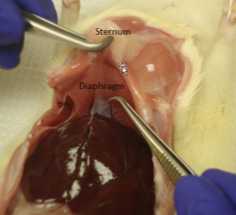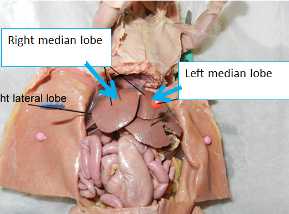Collecting Spleens for genotyping rats
Gabriel J Barrero, Oksana Polesskaya, Abraham Palmer
Abstract
This protocol describes how to dissect and collect soft tissue (spleen) from rats. Collected spleen tissue is intended to be used for DNA extraction and genotyping
Steps
Materials
Put spleen into a pre-labeled 2mLmicrocentrifuge tube (for example, Fisher Scientific cat#05-408-138). Add approximately 0.5mL saline solution in the tube with the spleen to prevent dry freezing of tissue, but make sure that tube is not over-filled. If your rats have been implanted with an RFID chip, try to find this chip during dissection and put it directly into the tube with the spleen. We will read both the barcode and RFID chip to confirm sample identity. For labeling use “Cryo Babies” for laser printers (Diversified Biotech cat# LCRY-1700), they withstand long-term storage in -80°C without peeling off the tubes.


Cut off ~ 5 mm of the tail tip and store it as a backup for genotyping at your lab. Use 2mLtube labeled with the barcode and rat ID, add saline to prevent sample desiccation. Store at-80°C long-term
Shipping spleens
Use at least 10 kg (20 lb) dry ice for shipping. If you have a choice, use pellets. If you use slabs, make sure that there is no free space in the shipping box, so slabs cannot move freely and crash things.
·
For shipping use Styrofoam box that is surrounded by a cardboard box. Choose boxes with thick walls. For example, ULINE S-13392 or ULINE S-11357.
· Send by FedEx overnight on Monday or Tuesday, check for holidays. It is best if you send an email to the lab beforehand so they are ready to receive it.
Send a list of samples that you are shipping (RFIDs), we will use it to update the database.






